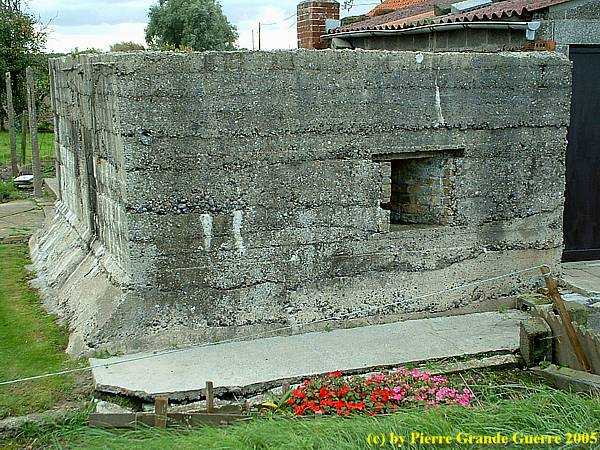YZER FRONT 2 - Pervijze - Tervate - Stuijvekenskerke
Year of visit: 2005
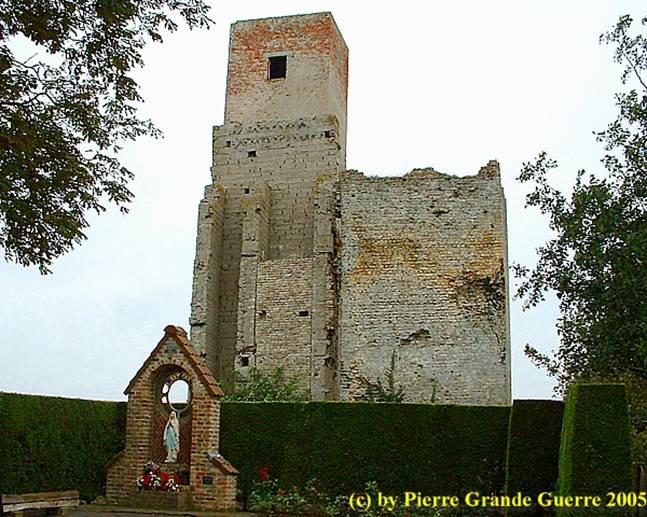
Furtheron southward, from Ramskapelle to Pervijze, still following the former Belgian lines along the Yzer to Tervate, and Stuijvekenskerke.
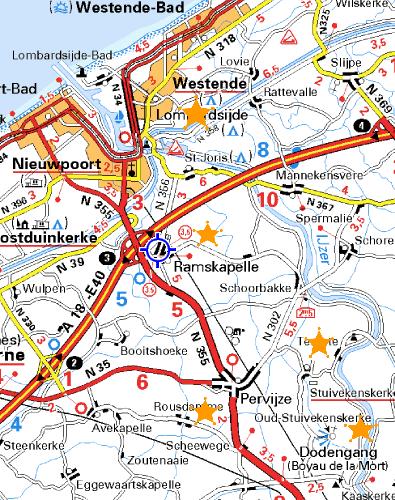
In the village of Pervijze we find this observation tower.
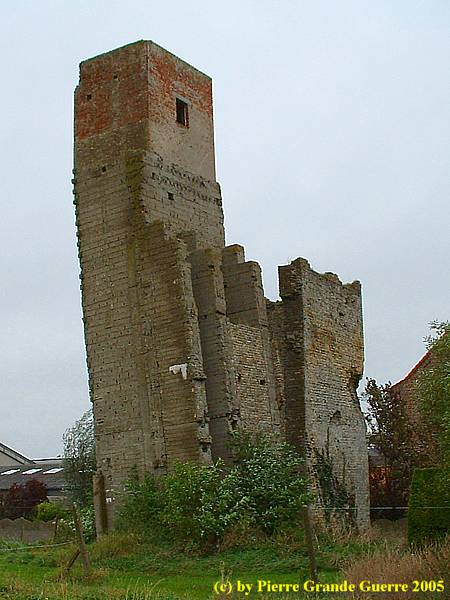
This period photo of Belgian soldiers has been made near this spot in October 1914.
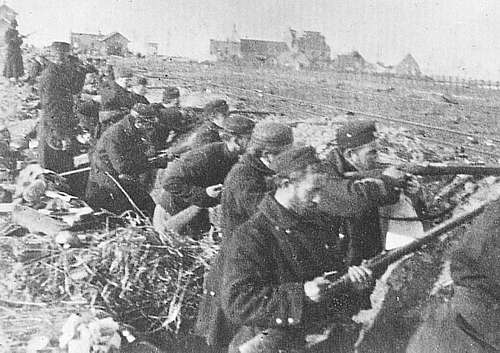
The tower is fortified with concrete walls on the inside.
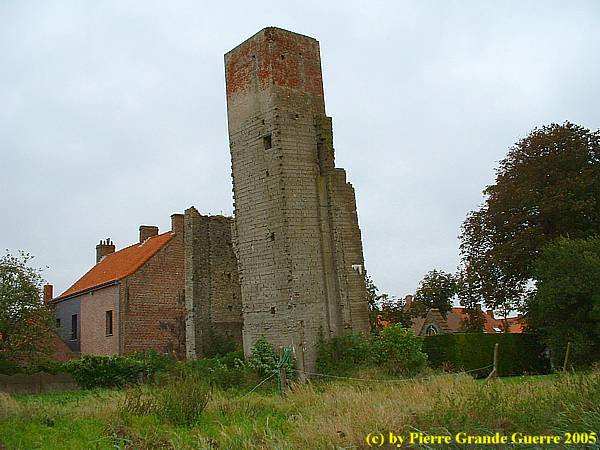
Along the western bank of the Yzer river, near the bridge of Tervate, stands the memorial for the Belgian Major Count d 'Oultremont, and his 2nd Batallion of the 1st Reg. Grenadeers, who were killed at this location during a storm attack on 22 October 1914.
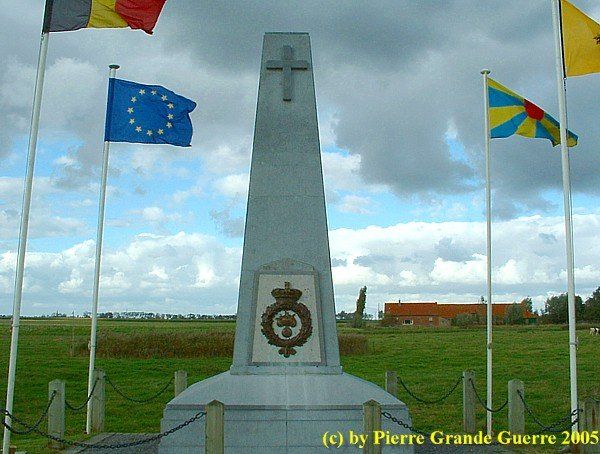
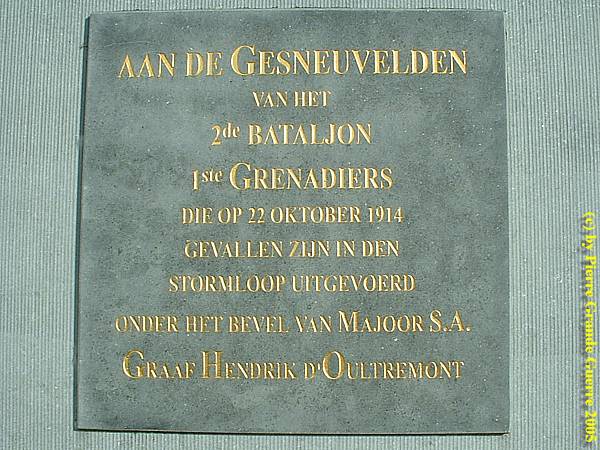
With my back to the monument: a view over the Yzer to the former German lines.
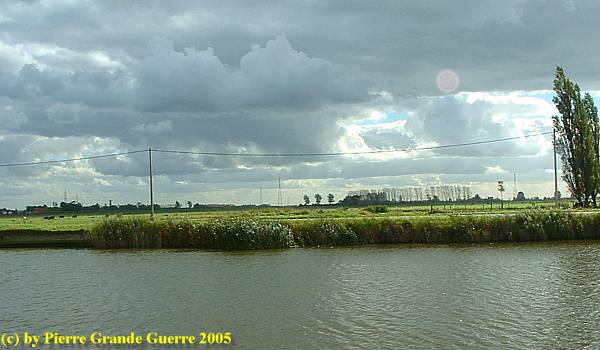
We drive on to the hamlet of Stuijvekenskerke, a dry spot amidst inundated lands, north west of Diksmuide.
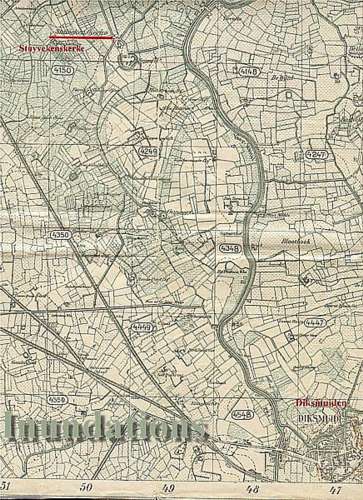
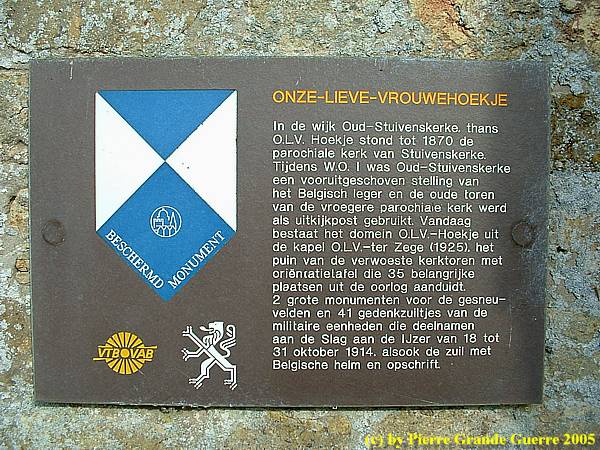
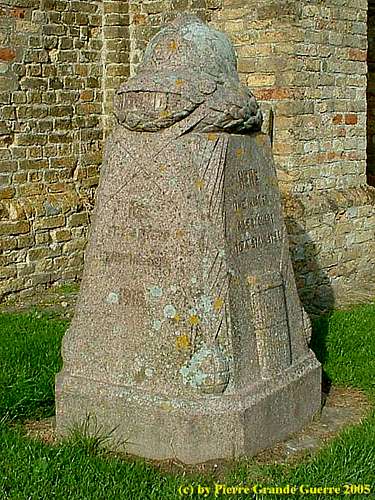
The "Corner", as the Belgian soldiers called it, used to be a former outpost of the Belgian Army.
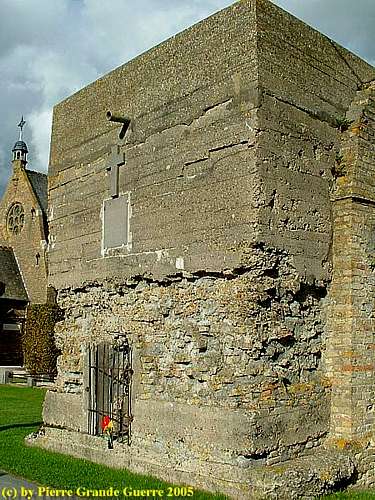
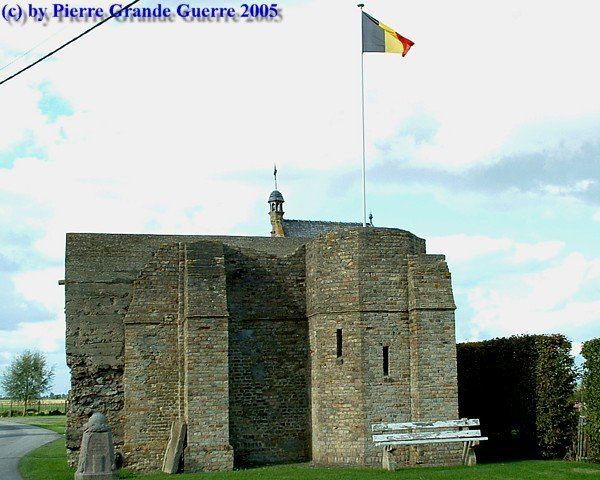
This bronze plaque commemorates the artillery officer in charge here, the Franciscan Monk, Lieutenant Brother Martial Lekeux, who had his observation post in this tower for 10 months in a row.
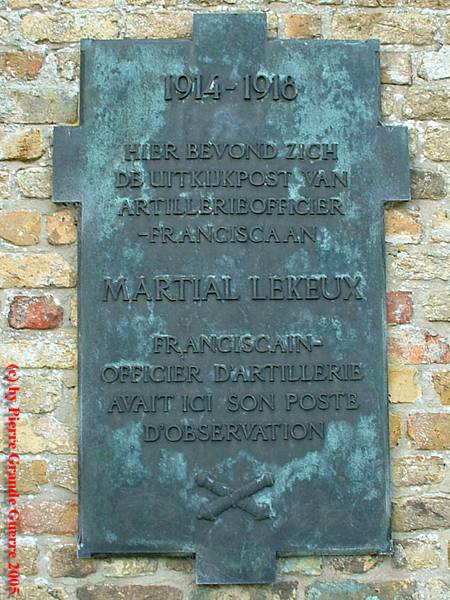
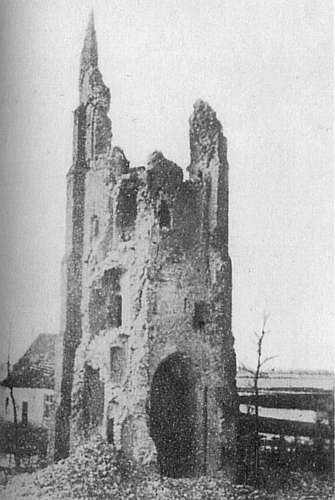
The inside of the tower is fortified with concrete walls.
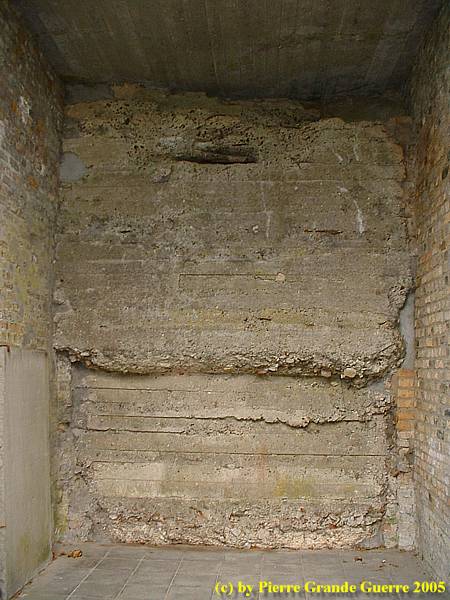
View from the observation tower in the direction of the Yzer.
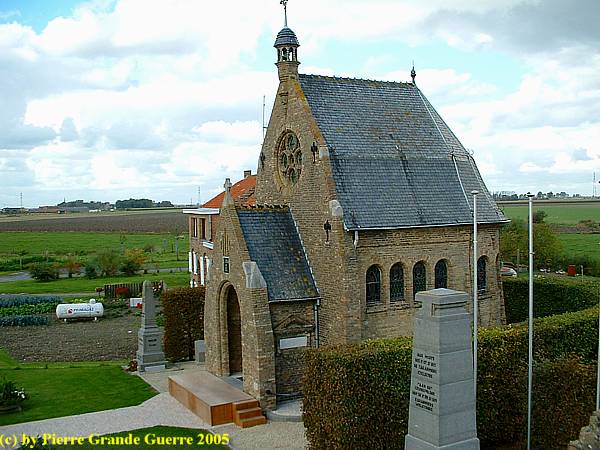
Right behind the tower in someone's back yard stands a bunker, a relic of the extensive maze of dugouts around this spot.
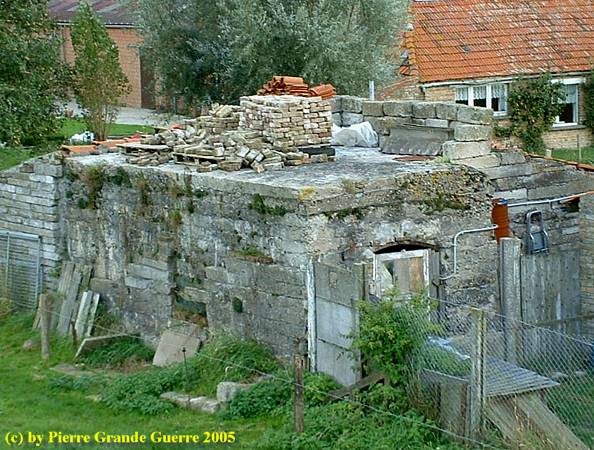
The Chapel of Peace.
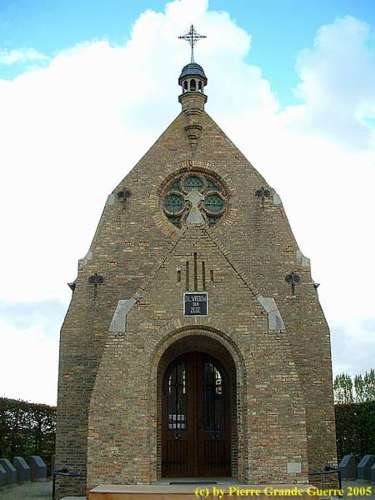
Two monuments in front of the chapel. The left one is in memory for the 5th Regiment Lancers.The right one commemorates the 1st and 2nd Bicycle and Carabineers Brigades.
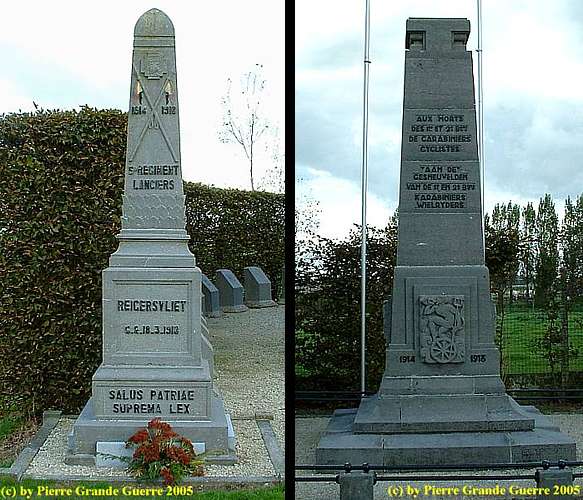
With a last view of this now so romantic looking location, ...
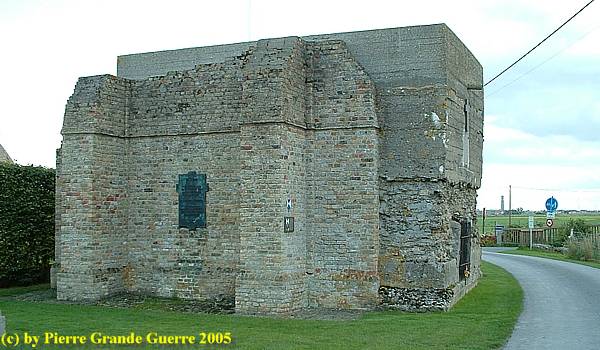
....we drive on to Oudekapelle to find this bunker.
